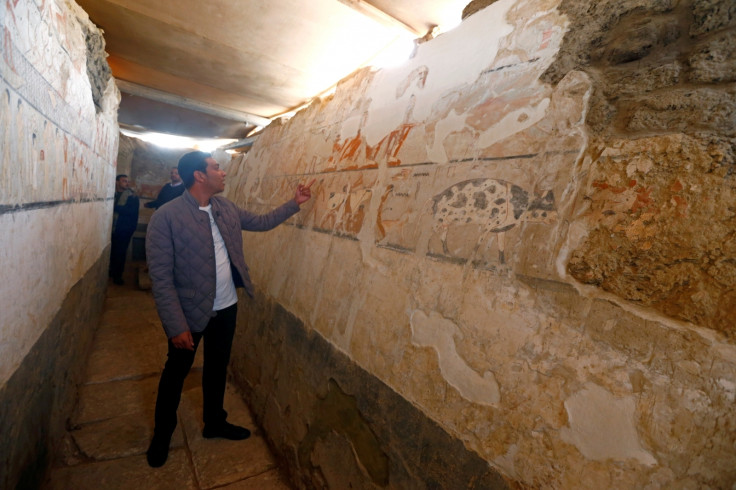4,400-year-old tomb discovered near Giza pyramids reveals history of ancient Egyptian priestess
Several rare paintings have been found inside the tomb, which was discovered just a few miles south of Cairo.
A group of archaeologists have discovered a highly decorated 4,400-year-old tomb just a few miles south of Cairo, Egypt. The ancient site, which is in good condition, is revealing new stories about the prosperous life of a high-ranking official who lived at that time.
The tomb, as National Geographic reports, is thought to have belonged to Hetpet, who served as priestess to Hathor, the goddess of the fertility, music, and dance. Hetpet's name and titles were found engraved on a purification basin inside the tomb, which was found just close to the Giza pyramids.
The mud-brick site, according to the Antiquities Ministry of Egypt, has a number of rare and well-preserved paintings depicting Hetpet. Some portraits showed her in hunting and fishing scenes and receiving offerings from children, while others showcased people melting metals and dancing.
A few paintings also reveal monkeys, one dancing and other picking fruit from a basket, in the scene. It is believed that the animals were kept as pets during that time.
"Such scenes are rare... and have only been found previously in the (Old Kingdom) tomb of 'Ka-Iber' where a painting shows a monkey dancing in front of a guitarist, not an orchestra," Mostafa Al-Waziri, the leader of the group that made the discovery, told Agence France-Presse.

Among other things, the group also found an L shaped shrine inside the entrance of the tomb. However, they did not find any mummy there. The discovery, first of the year from Egypt, gives more insights into the ancient life of Hetpet whose name was first found on ancient antiques unearthed from the same site.
Now that the group has found the tomb of Hetpet, they'll continue excavating the site to discover other hidden ancient artefacts that may reveal crucial things about the Egyptians who lived during the Old Kingdom or the prosperous era that during which the pharaohs rules and several pyramids and ancient structures were constructed.
"What we see above the earth's surface in Egypt doesn't exceed 40 percent of what the core holds," Al-Waziri told The Associated Press.





















